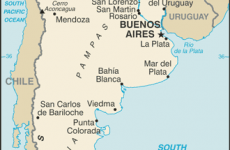Continuing its widespread coverage of assessment tests, Thesis would like to share with its readers some results from the 2012 Program for International Student Assessment (PISA), a test designed and administered by the Organization for Economic Co-operation and Development (OECD) every three years which gauges the capacities of 510,000 fifteen-year olds from 65 countries in reading, math, and science. The following digested information has been pulled from both the PISA website and the National Center for Education Statistics:
– Chinese students were the strongest test-takers across all three categories; the percentage of high-performing Chinese students (i.e. those who received more than a level 5) in reading, math, and science was 25, 55, and 27, respectively.
– The percentages of US top performers in the same categories were 8, 9, and 7.
– OECD average scores in these three fields were 496, 494, and 501. Chinese averages were 570, 613, and 580, whereas the US averages were 498, 481, and 497.
– US averages were lower than 19 countries in reading, 29 countries in math, and 22 in science. 18 countries received higher average scores than the US in all three categories.
– Over the past decade, US scores have hardly varied. Average scores for American students in reading and math in 2003 were 495 and 483, and the average score for students in science in 2006 was 489 (in 2003 the science section was being revised, hence the unavailability of data for that year).
According to these results, then, US students underperform in two of the three target areas tested, and over the course of ten years – despite the introduction of the Core Curriculum, No Child Left Behind Act, and the growing popularity of performance as an indicator of a schools’, teachers’, and students’ success – US students’ averages have stagnated rather than improved. Actually, if one looks at US averages from 2009, one will be disheartened (although, possibly, not entirely surprised, unfortunate as that may be) to learn that US students’ mean scores have actually dropped ever so slightly (US averages in reading, math, and science were 500, 487, and 502 respectfully).
US students’ PISA results seem to further demonstrate a regression in Americans’ skill-based aptitudes which Thesis has written about elsewhere. Whether it be American adults’ lagging scores in literacy, numeracy, and computer-based problem solving or the widening performance gap between Hispanic and non-Hispanic students, we appear to be in the midst of a crisis. One can dissect the merits and pitfalls of assessment tests as measures of pedagogy, knowledge, and opportunity, but the fact remains that something is rotten in the states of America. To this point, the PISA includes socio-economic indicators in its report, and its findings here are equally alarming: the US couples below-average test performance with below-average equity in education opportunities, and the percentage of US students who claim they are happy at school is lower than the international PISA mean.
These two conclusions are striking in and of themselves, but what is even more disquieting is that a whopping 98% of US students claim that good grades in high school can be equated with acceptance to a good university. This, ladies and gentleman, is the highest percentage of students in any country who demonstrate a similar line of reasoning, i.e. a line of reasoning wherein academic performance is the sole conduit to future success while other considerations – community involvement, a love of learning, the cultivation of interests and passions – abate in importance.
To me, these statistics underscore the need for attitudinal and philosophical overhauls of not only how materials are taught, but also why materials are taught. They seem to betray an obsession with grades and results which could then lead to disenchantment and weaker performance. Maybe it is a wasted exercise to seek a thread of causality among these perhaps disparate sets of facts and figures, but all the same, there may be something to be said for introducing new vocabularies and methods for teaching in American schools.
Learning need not be a wholly utilitarian chore; instead, it could serve as an enjoyable means unto itself. Knowledge does not need to be random information which must be regurgitated at the drop of a pin; rather, especially in the case of disadvantaged students, it can be a means to surmount institutional hurdles and personal obstacles. I am not saying that standardized test results are immaterial and need not be paid their due heed, not at all. Rather, I am simply suggesting that drastically changing curricula to include more class time covering topics A, B, and C may not be the solution; instead, it could lie in something as seemingly simple as reformulating our expectations and our goals.
U.S. students’ stagnant performance on international assessment http://t.co/YNx6YTFWeZ pic.twitter.com/zA455j0SVG
— Thesis Magazine (@GAThesis) December 6, 2013

























